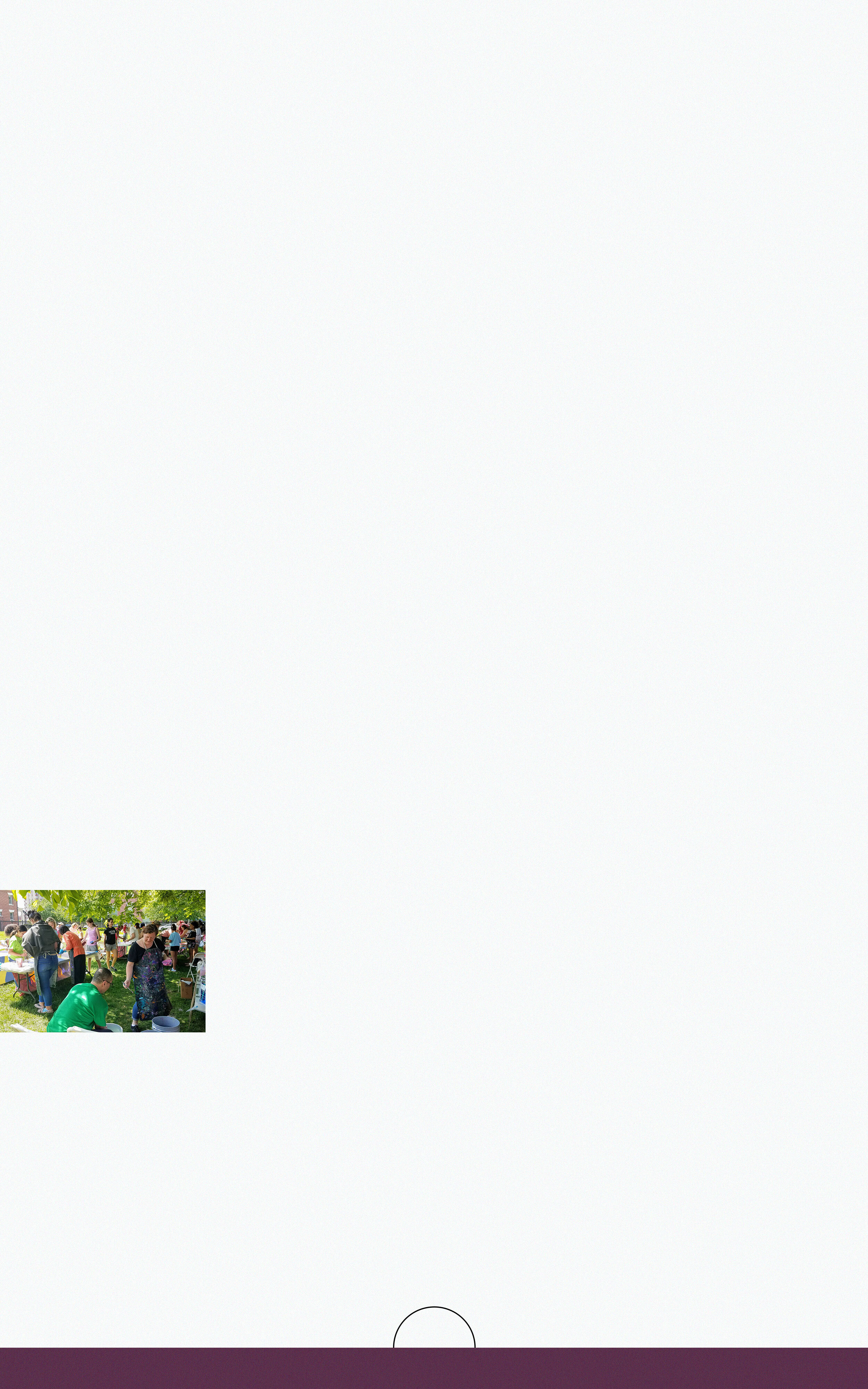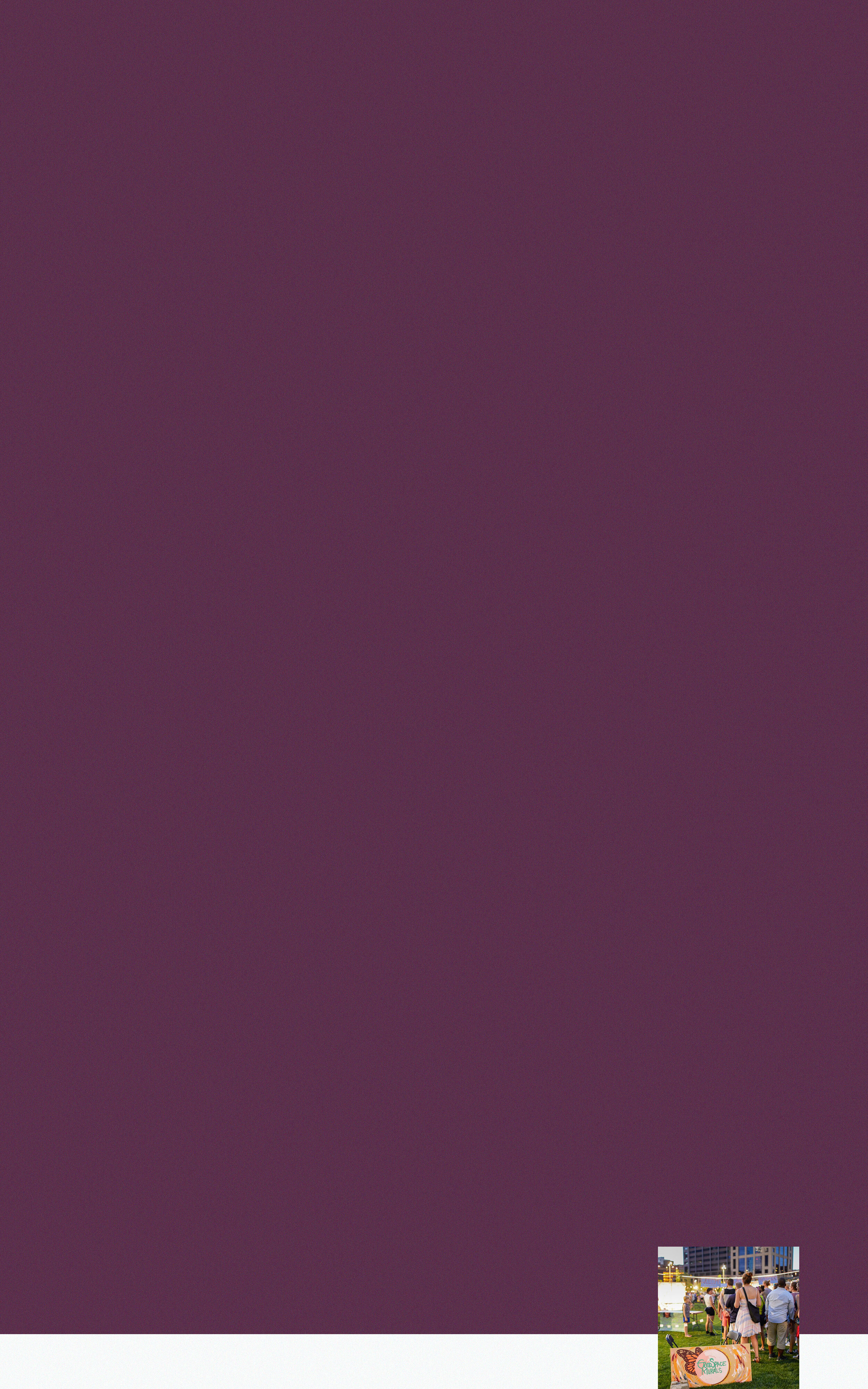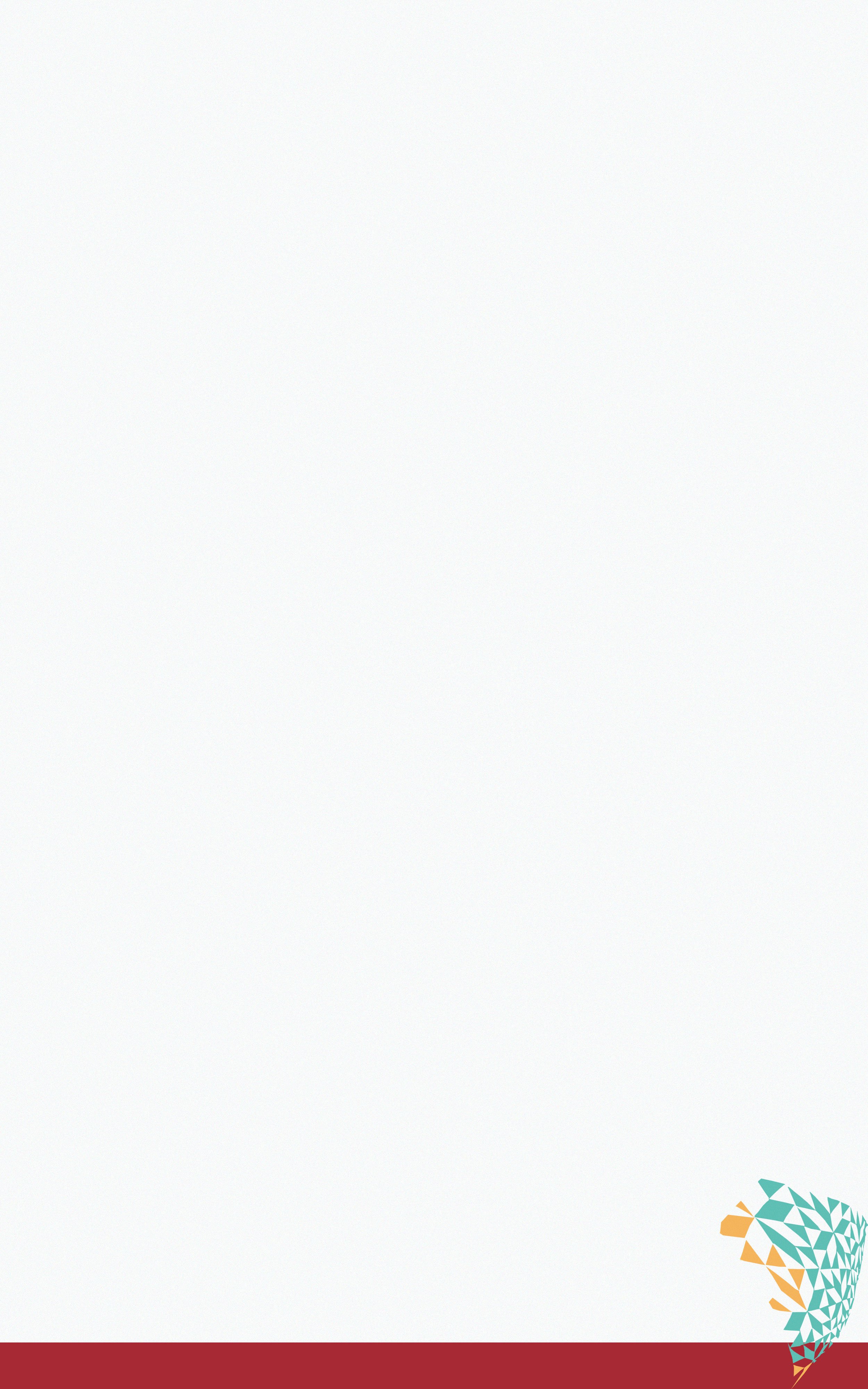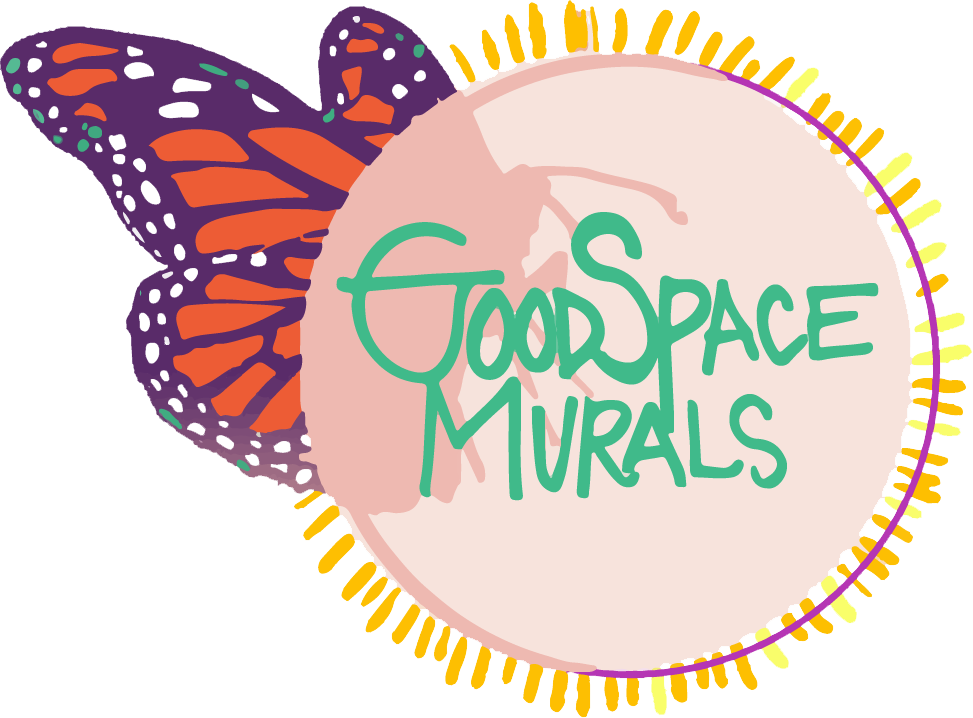
we aim to include as many people as we can in the public art process; seeding ownership and agency in our public landscape.

OUR PROCESs
Indirect Process
We use an indirect technique that is called “the parachute cloth technique” in which we paint the entire mural on sheets of canvas before installing it onto the wall.
Open Access
This technique opens up the possibility of collaboration in the creation of the mural: in the classroom, in the park, inside or outside...anything! Everyone is able to participate.
Installation
We install the canvas sheets in a process similar to permanent wallpaper. A mural created using this technique lasts longer than a mural painted directly onto the wall.

Community Participation
Design
We involve the community in every part of the mural. We begin conversations with the main institutions involved in the project and later open it up to the public with community design events.
Mural Paint Parties
We provide a fun opportunity for the community to come out and paint the mural at a family-friendly painting event.
Celebration + Mural Unveiling
A community party to celebrate what we created together!

Community Paint Parties
During the mural creation process, we work with you to host community paint parties where everyone has a chance to be a part of the mural painting and/or mosaicking. The purpose of the parties are:
To promote a common sense of ownership of the artwork.
To foster the sentiment of shared pride in the artwork and in oneself for having made it which transforms more generally into pride in place.
To create an educational opportunity for the public to engage in fine art.
To provide a space to sow friendship and relationship between neighbors.
To create opportunity for youth to teach within their community.

Kind Words

FAQs
-
The Parachute Cloth Mural Method was developed and made popular by the Philadelphia Mural Arts Program. It is an indirect mural technique that uses a synthetic non-woven canvas called Poly Tab/Parachute cloth. Muralists can paint full murals off site on this canvas and then adhere it to the
wall like permanent, hand-painted, wall paper. The technique extends the mural season, allowing artists to work inside during the winter and then install in the summer, etc. It is also great for accessibility when paired with community engagement, allowing for more people to get their hands in the making of the work without participants needing to be on ladders.
-
A community engaged mural is a mural that works with a group of people to capture their stories and desires for their community in the mural that then lives in their community. There are many ways to do community engagement in a mural process, we emphasize community participation as high a priority as the quality of the final artwork itself; engaging community in the design process, the fabrication process and in the final mural celebration. We see mural making as an ideal way to connect people to each other and to community organizations and resources while creating beautiful and intentional artwork to place-keep and create community landmarks. In order to make a community-engaged mural, muralists generally partner with community organizers that are already doing work in the area and with the people who will then be engaging with the mural project. In contrast to other forms of mural making or street art, community-engaged mural making is intentionally community focused, community driven, and community connected.
-
A mural created using the parachute cloth method tends to last longer and wear better than a mural painted directly on a wall. Each sq. inch of the mural surface is covered with the equivalent of 6 or 7 layers of paint and results in a mural that stays vibrant and in good condition for up to 20 years. The parachute cloth also provides a surface that prevents the paint from peeling. Upkeep is only necessary on exterior walls that might get scuffed or dirty due to salt, snow spray, exhaust fumes, etc. In these cases, the surface of the mural can be wiped down with a gentle dish soap/water solution and soft sponge.
-
A mosaic mural has the potential to be even longer lasting than a painted mural. We use high-fire porcelain tiles imported from Italy and Portugal that are designed for long lasting, brightly colored, exterior use. On a vertical surface, mosaics will last over 20 years and need minimum upkeep. Again the surface can be cleaned with a gentle dish soap/water solution and soft sponge if it gets dirty. It is suggested that a mosaic be regrouted every 5 to 10 years, since the grout tends to wear faster than the porcelain tile.
-
Yes. Parachute cloth can be removed via powerwashing/light sand blasting. However in that process the mural will be ruined. However, the wall beneath will not be damaged. Murals can also be painted over without removing the parachute cloth.
-
During the design phase of our mural process, we ask local community partners for recommendations of local artists that might be interested in working with us and learning our techniques. We tend to hire a local assistant or two for most of our projects in order to connect in with the local mural scene and skill share.
-
Our budgets vary according to many factors; community residency, levels of community involvement, dimensions of the wall, interior/exterior, and materials (mosaic, paint, etc.). We tend to land between $15-$30,000 for interior community projects and between $30-$70,000 for exterior community projects. We always remind our community partners that our projects are way more than a mural. They are opportunities to engage with the greater community on various levels and shift the visual landscape of a space in a long-lasting, community-centric way. We engage with our community partners during three phases, design, fabrication and installation and work with them for a month up to a year in order to create a mural that has real lasting impact.
-
Our murals start with phase 1: community design. During this phase we gather info, stories, ideas, photos, textures, patterns, history, and dreams for the future that will ultimately inform the final design. The mural design is then put together by our lead artist. Generally that lead artist is our Artistic Director Greta McLain, but we also collaborate with other lead artists who would then work together to create the mural design based on ideas gathered during the community design phase.
-
We recommend that our community partners create a Design Panel that represents their greater vision for the mural and it’s audience. This panel should be a slice of community that represents the greater community voice and is able to provide feedback and edits that represent the greater community. That panel should include the owner of the building and a member of the community that the mural will interface with. At the end of Phase One, we present a mural to the Design Panel and ask for feedback. From there we move into edits based on that feedback until we land on the right design. This process of conversation, feedback and edits is crucial to our community mural process.




